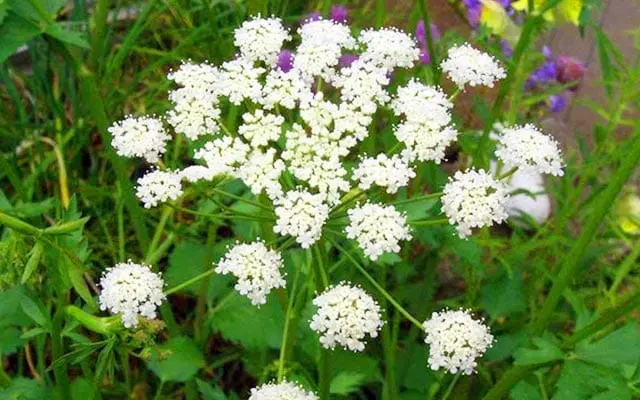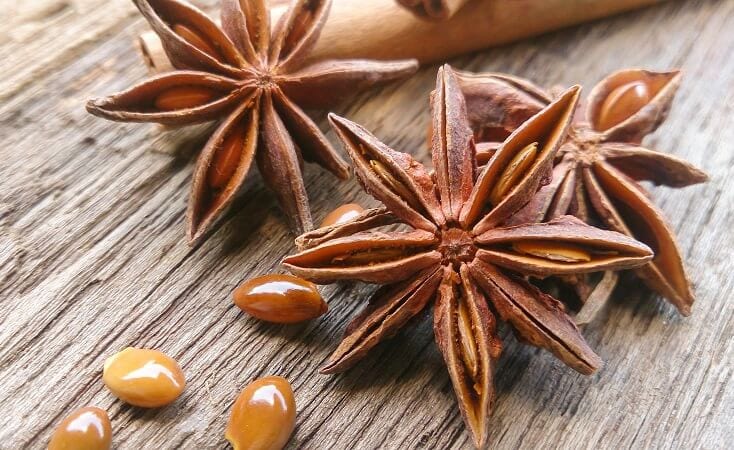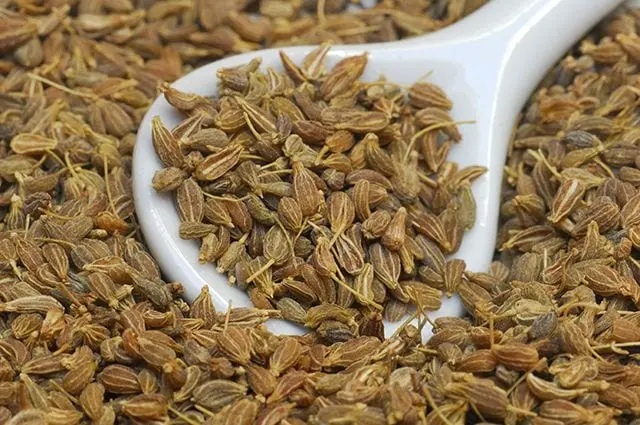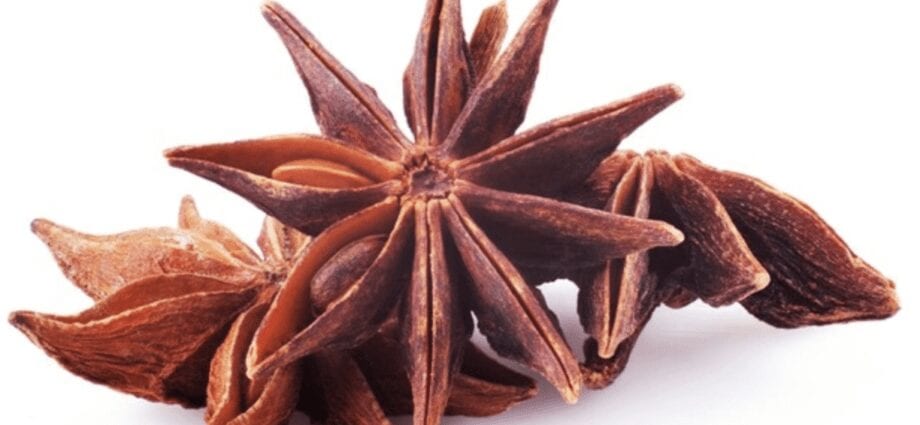Contents
Taste and aroma
Anise seeds have an intense sweet aroma. The taste is specific – sweetish-spicy. Fresh anise seeds have a rather bright greenish-brown color and an intense smell; if stored improperly, they darken and lose their aroma.
The most useful anise, whose medicinal properties were known in ancient times, has not yet taken its rightful place in our cooking – unless, of course, we are talking about aniseed vodka.
Anise is an annual from the Celery family, which is grown mainly for the sake of small brownish-gray fruits with a specific aromatic odor and sweetish-spicy taste. Asia Minor is considered the birthplace of anise, from where it, thanks to its ability to grow in any climate, as well as its taste and aroma properties, spread throughout the world.
The healing properties of the fruits and herbs of anise were recognized even in ancient times, as evidenced by Isidore, Bishop of Seville (c. 570 – 636), the author of a unique all-encompassing encyclopedia of ancient knowledge “Etymology, or Beginnings, in XX books”: “Aneson of the Greeks, or Latin anise, – a herb known to all, very exciting and urinating. “
Historical facts

Anise has been famous for its essential oil and healing properties since ancient times. This plant was well known to the ancient Egyptians, ancient Romans and Greeks.
The Egyptians baked bread using this spice, and the ancient Romans widely used anise seeds for health purposes. Hippocrates, Avicenna and Pliny wrote about the properties of anise, in particular, that anise freshens breath and rejuvenates the body.
In addition to its healing properties, magical properties were often attributed to this plant – anise plants were tied at the head of the bed to purify the air and get rid of nightmares.
The composition and calorie content of anise
A distinctive feature of anise is its chemical composition. The plant is rich in elements such as:
- Anethol;
- Proteins;
- Fats;
- Vitamins;
- Choline;
- Coumarin.
The high content of protein and fat in anise seeds is responsible for its considerable nutritional value. The calorie content is 337 kilocalories per 100 grams of seeds.
Appearance

Anise fruits begin to ripen in August. They are egg-shaped and are slightly pulled down. Also, the fruits of the plant are characterized by the presence of slightly protruding spin edges. Characteristics of anise fruit:
- The length is no more than 4 millimeters;
- Diameter ranges from 1.5 to 2.5 millimeters;
- Ripe fruits are green in color;
- The mass of seeds is only up to 5 grams per thousand units of the product;
- They are characterized by a sweet aroma with spicy notes;
- Aniseed fruits taste sweet.
- Anise flowers are good soil for bees. It is the pollen from these flowers that is the main component of aniseed honey. The characteristic habitat of common anise is hot countries.
Where to buy anise

Anise is an infrequent guest in regular supermarkets. Most often, it can be found in markets or in specialized stores. However, on the market the spice quickly loses its aroma and is of questionable quality.
And when buying in specialized stores, you need to pay attention to the manufacturer, his reputation, experience in the market and, of course, quality certificates.
Unusual properties of anise:
- used in the production of soap, perfumes and other aromatic products.
- in India, its seeds are chewed after meals to freshen the breath.
- the smell of anise attracts dogs, so it is used when training hounds.
- Anise is used as a simple remedy for hiccups: you need to chew a few seeds, and then wash them down with a glass of water.
- It is believed that the aroma of anise instills optimism in a person, makes him diplomatic, improves mental activity, and increases the ability to adapt.
Cooking applications
- National cuisines: Portuguese, German, Italian, Middle Eastern and French.
- Classic dishes: sauerkraut, pickled apples, aniseed bread, tinctures: rakia (Turkey), ozo (Greece), pernod (France), ojen (Spain), sambuca (Italy).
- Included in mixes: curry, hoisin sauce (China), pepperoni mixes.
- Combination with spices: bay leaf, coriander, fennel, cumin.
Usage: mainly seeds are used, often ground.
Application: meat, fish, vegetables, sauces, baked goods, preparations, drinks, cheese
Application in medicine
As always, the fruits of anise owe their beneficial properties to proteins, fats, carbohydrates, essential oils of complex composition (up to 3%), organic acids, vitamins, macro- and microelements. Together, they have an antispasmodic, expectorant, antiseptic, analgesic, carminative effect, and have a positive effect on digestion and respiratory organs.
Has a beneficial effect on:

- the digestive system (increased secretion of gastric juice, relieve spasms in chronic gastritis);
- lactation (estrogenic effect, therefore, anise preparations stimulate the functions of the mammary glands during lactation);
- respiratory system (moderate expectorant effect, antiseptic effect on the bronchi, stimulation of reflex excitement of respiration);
- improvement of skin functions (improvement of blood circulation in the skin capillaries).
- Burns are treated with a mixture of crushed fruits with egg white.
- Expert advice
- the anise flavor is enhanced by roasting the seeds in a dry skillet without oil.
- the seeds quickly lose their taste, so it is undesirable to make a large supply of this spice.
- Anise seeds are best bought whole and stored in tightly closed jars out of direct sunlight.
Anise Coontradictions
- This method of treatment should not be abused by patients who suffer from stomach diseases and have diseases of the mucous membrane of the colon of an inflammatory nature;
- Anise is used with caution in the population with a high level of blood clotting;
- It is not recommended to resort to treatment with this plant for pregnant women.










